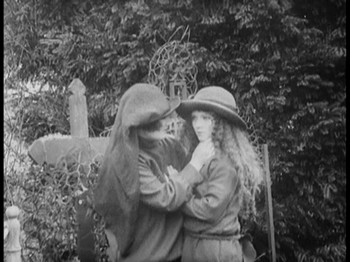Lynch's Mulholland Drive is greatly influenced by early French surrealist cinema in many ways. Almost all of the French films use dreamlike sequences and nonlinear story lines or misleading narrative devices. One main example of this can be seen in La Coquille Et Le Clergyman by Germaine Dulac. Throughout the whole movie, you are not sure what part of the movie is reality and what is hallucination or a dream, and the same stylistic surreal device is used throughout Mulholland Drive. Dulac also uses exaggerated acting, intense lighting and focusing on faces to express emotion in a similar way the Lynch does. Both films also use archetypes of characters, like the actual Clergyman in the french film, and the naive Hollywood hopefully in Lynch's movie.
These ideas of ambiguous separations between the real world and the imaginary or dream world are especially prevalent in Un Chien Andalou. Salvador Dali and Luis Bunuel uses shocking images and fantasy like scenes to make the viewers sense of reason useless. This same technique is used by David Lynch in his films.
In Man Ray's Emak Bakia, he uses soft focus and double exposure to add to the surrealist quality in the movie. This same technique is used by David Lynch in Mulholland Drive.
In L'Age d'or, Luis Bunuel uses symbolism in an abstract way to portray certain ideas, which one can definitely see influenced David Lynch's Mulholland Drive. For example, Bunuel used the scene of the young girl passionately licking and sucking on the toe of a religious statue to symbolize the sexual repression by the church. Lynch also uses symbols in his movie, for example, in the form of the scary looking homeless man in the beginning of the movie which would represent the dark reality of the last third of the movie.
Synecdoche is a figure of speech in which a part is used for
the whole or the whole for a part, the special for the general or the general
for the special. It is typically used
within cinema to emphasize an important aspect of a character
Metonymy is a figure of speech used in rhetoric in which a
thing or concept is not called by its own name, but by the name of something
intimately associated with that thing or concept. For example a jigsaw
originally means a cutting tool, but its metonymy would be the jigsaw puzzle.
Metaphor is a figure of speech in which a term or phrase is
applied to something to which it is not literally applicable in order to
suggest a resemblance.
Allegory is a representation of an abstract or spiritual
meaning through concrete or material forms; figurative treatment of one subject
under the guise of another.













